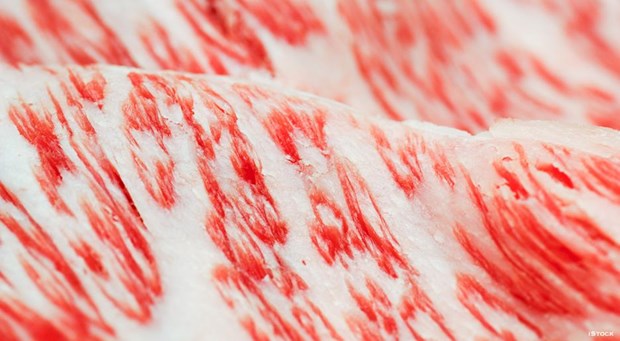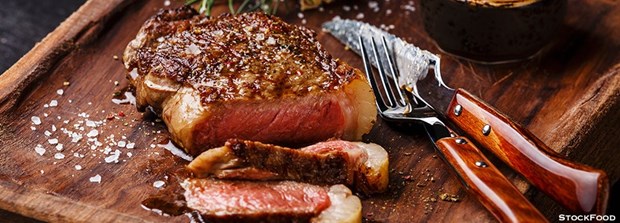The amount of fat in meat influences its flavor, tenderness and juiciness. Don't miss these tips for trimming meat and improving its cooking process.
If
we imagine a succulent beef steak or a pork loin roast, our attention is
normally focused on the “meat”, without realizing that the flavour and aroma of
these dishes largely depend on their fat content. In fact, the term “meat” is
used to refer to the muscle alone, forgetting that lipids are essential to make
a morsel of meat tasty, tender and succulent, no matter whether we decide to
barbecue, grill or roast it.

Meat fat.
For
this reason, the amount of fat must be accurately assessed as we go about
preparing our cut of meat for cooking. Should we remove all of it, leave it or
remove it partially? And if so, how much?
The
answers to these pertinent questions make all the difference between a
deliciously smelling and tasty chop, thanks to a perfect Maillard reaction, and
a piece of meat that tastes as though it has been boiled, despite being
overcooked on a barbecue. To avoid this pitfall, you need to know your fats.

Raw beef meat.
Different types of
meat fat
Animal
fats are known as “saturated fats”, even though it is more correct to speak of
“saturated fatty acids”, owing to the fact that they are made up of chains of
carbon atoms linked together by single bonds.
Fats
have various functions, the most important of which are to store energy and
protect the organs. This is why animals have "outer" fat and
"intramuscular" or interstitial fat.
Marbling or
interstitial meat fat
Interstitial
fat builds up between the muscular fibres and forms what is known as
"marbling", something all barbecue fans are fond of.
Marbling,
those veins of fat to be found in steak, is so important thatit has become a
parameter for assessing meat quality. To put it more simply, if an animal is
raised naturally, in its own time and pasture-fed, it tends to accumulate fat
evenly between the muscular fibres and this makes its meat very tender when
cooked.
The
United States Department of Agriculture (USDA) classifies meat according to its
degree of marbling, so much so that "Prime steak" is the
"fattiest". It goes without saying that we are not referring to outer
fat but to interstitial fat, which is beyond our control: if the veins of fat
exist, so much the better; if not, our piece of meat lends itself to being
cooked "rare" or, alternatively, to a long cooking process during
which it must be constantly basted with added fats (such as oil or butter).

Grilled meat.
Outer fat
On
the other hand, much can be done with outer fat to produce a perfectly cooked
piece of meat. In this case, we refer to the subcutaneous fat which, for
instance, is to be found directly under the pork rind or around a piece of beef
sirloin.
If
this fat tends to be yellowish in colour, then it will also be tasty owing to
the fact that the animal has been pasture-fed or, at any rate, grass-fed, and
possibly to a good ageing process. In this case, for the purpose of barbecuing,
we can leave from one and a half to two centimetres: once cooked, it will
enrich the flavour of the meat with which it comes into contact and will taste
delicious.
How to avoid the
"boiled effect”?
When
meat is totally enwrapped in fat and subjected to heat, it tends to retain
water which has the same effect as boiling when heated. Not exactly the result
you wish to achieve, I imagine.
In
particular, it has to be remebered when cooking pork meat. Pork fat obviously
has a similar composition to that of beef, but its meat is less marbled. For
this reason, it is customary to remove a lot of fat from pork when preparing it
for a barbecue, in order to avoid the "boiled effect". Unless, of
course, our pork is covered in rind.
In
this case, on condition that a very (very) slow indirect heat is used, pork
rind - or crackling - makes an excellent, crisp and extremely tasty morsel, as
authentic foodies know all too well. However, should this be the case, we must
learn to make deep scores in the rind, as far as the meat, to avoid the pitfall
of a result that tastes "boiled".
By FDL